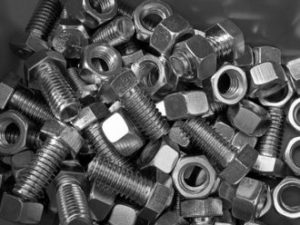 They’re tiny. They’re often overlooked and unappreciated. However, nuts and bolts are instrumental in the creation of millions of products. Without these fasteners holding things together, many products would be rendered useless. With so many applications, nuts and bolts come in a variety of types.
They’re tiny. They’re often overlooked and unappreciated. However, nuts and bolts are instrumental in the creation of millions of products. Without these fasteners holding things together, many products would be rendered useless. With so many applications, nuts and bolts come in a variety of types.
If you’re working on a special project that requires the use of fasteners, you’re going to need to consider some important factors while deciding which nuts and bolts will work best for your intended application. To give you a basic understanding of nuts and bolts and what you should consider when you’re looking to buy some, here is a brief but complete guide.
Factors to Consider before You Buy
To know which type of fastener you’re going to need, there are a few factors you’re going to have to consider. First, what type of material will you need to join together? If it’s metal, a bolt will be your fastener of choice. How thick is that material? The length of your bolt will depend on the material’s thickness. You’ll also need to know the weight and strength requirements to know how strong your bolts will need to be—from structural heavy-duty steel to hobbies and crafts, these requirements will make a big difference in the nuts and bolts you ultimately choose. Lastly, consider whether your nuts and bolts are going to be placed outdoors or if they’ll be protected from the elements indoors—this will determine whether or not you’ll need special plating.
Bolts
Unlike screws, bolts have blunt tips and require nuts to be placed on them to make a secure and tight connection. Their sizes are measured in length. Depending on the configuration of the head of the bolt, you could use a screwdriver, nutdriver, or wrench to tighten a bolt.
Carriage Bolt: The carriage bolt has a rounded head, no slots, and a square shoulder under the head. It can be used to connect pieces of wood and is the ideal choice when a hexed head isn’t desirable for the application or appearance.
Machine Screw (Bolt): The machine screw head can be round, oval, or flat and it can be slotted. Most will with have threads on its entire body. It’s used for general utility.
Hex Bolt: The Hex bolt has a hexagonal head and is threaded either in its entire body or on just a portion of its length. It is used for general utility and is applied with a socket/ratchet or wrench.
Stud Bolt: This bolt is headless and thus requires nuts on both ends. Normally it is threaded along its entire length. It can come in lengths of up to three feet long because it’s used when additional length is needed.
J-Bolt, U-Bolt, and Eyebolt: These types of bolts are used to support hanging items and have no head.
Nuts
Bolts can hold things together tightly thanks to the nuts—fasteners with threaded holes—that wrap around them to keep them in place. The nuts you choose will be directly dependent to the bolts you’ve already chosen for your project including matching the same grade. They must work together to make a secure connection.
Square or Hex Nut: This nut is the most commonly used due to its square or hex-shaped outer diameter and the fact that it comes in a variety of thicknesses and finishes.
Wing Nut: This nut is ideal for situations where the material needs to be removed or replaced often, since it can be loosened or tightened by hand.
Lock Nut: This type of nut is similar to a square or hex nut but comes with threaded nylon inserts in order to prevent loosening.
White Paper: JS Plus™ Plating
Discover a New Superior Plating Option
